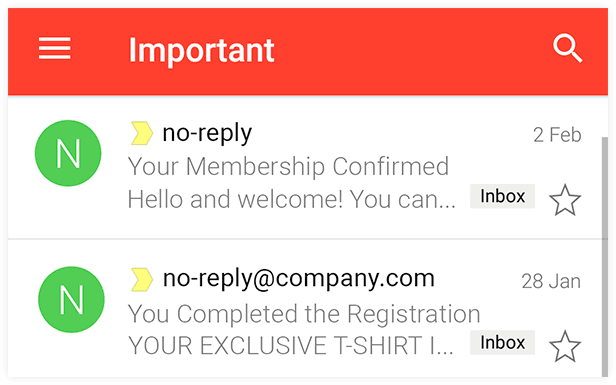Noreply email addresses are a common sight in our inboxes, often associated with verification or account-related emails. But what do they really mean, and how can you ensure you're dealing with legitimate emails and not falling victim to scams? In this guide, we'll delve into noreply email verification, its purpose, and best practices to stay secure.
What Is a Noreply Email?
A noreply email is an email address used by organizations to send messages to recipients without expecting a reply. These emails are often automated and serve various purposes, such as verification, account notifications, or newsletters.
Noreply Email Verification: Its Purpose
1. Account Verification
One of the most common uses of noreply email addresses is for account verification. When you sign up for a new service or platform, you may receive a verification email from a noreply address. Clicking the verification link confirms your email's validity and activates your account.
2. Account Recovery
Noreply emails are also used in the account recovery process. If you forget your password, you might receive an email with instructions on resetting it. These emails come from noreply addresses to prevent unauthorized access to your account.
3. Transaction Notifications
Financial institutions and online stores often send transaction notifications via noreply emails. These emails confirm purchases, deposits, or withdrawals, ensuring that you're aware of any activity related to your account.
Identifying Legitimate Noreply Emails
With the prevalence of phishing and scam emails, it's crucial to differentiate between legitimate noreply emails and fraudulent ones. Here are some tips:
Check the Sender: Legitimate organizations typically use recognizable domain names for their noreply addresses. Verify that the sender's domain matches the official website.
Verify Links: Before clicking any links in a noreply email, hover your mouse cursor over them to see the actual URL. Ensure it leads to the organization's official website.
Grammar and Spelling: Pay attention to the email's grammar and spelling. Scam emails often contain errors or inconsistencies.
Use Official Contacts: When in doubt, contact the organization through official channels (e.g., their website or customer support) to confirm the email's legitimacy.
Noreply Email Verification Best Practices
Keep Software Updated: Ensure your email client and security software are up to date to protect against email threats.
Use Strong Passwords: Create strong, unique passwords for your email accounts to prevent unauthorized access.
Enable Two-Factor Authentication (2FA): Whenever possible, enable 2FA to add an extra layer of security to your email accounts.
Regularly Monitor Accounts: Check your email and financial accounts regularly for any suspicious activity.
Common Questions About Noreply Email Verification
Let's address some common questions related to noreply email verification:
Q1: Why do organizations use noreply emails?
- A1: Noreply emails are used to send automated messages, such as account verification or recovery emails, without expecting a reply.
Q2: How can I tell if a noreply email is legitimate?
- A2: Check the sender's domain, verify links, review the email for errors, and use official contacts to confirm legitimacy.
Q3: Are noreply emails secure?
- A3: Noreply emails themselves are not inherently secure or insecure. Security depends on how well you protect your email account and practice safe email habits.
Conclusion
Noreply email verification is a common practice used by organizations to ensure the security and functionality of online accounts. By understanding its purpose, identifying legitimate emails, and following best practices, you can stay safe in the digital landscape and protect your sensitive information from scams and phishing attempts. Remember that vigilance and caution are your best allies in the world of email communications.



